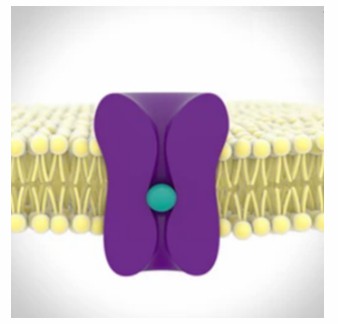-
- Development of Small Molecule Drug for Stroke
- Targeted Stroke Drug Development
- Stroke Drug Development Targeting Noncoding RNAs
- Stroke Drug Development Targeting PSD-95
- Stroke Drug Development Targeting Tau
- Stroke Drug Development Targeting Heat Shock Protein 70
- Stroke Drug Development Targeting Notch
- Stroke Drug Development Targeting Guanosine
- Stroke Drug Development Targeting Nogo-A
- Stroke Drug Development Targeting Nrf2
- Stroke Drug Development Targeting DAPK1
- Stroke Drug Development Targeting AMPK
- Stroke Drug Development Targeting Caveolin-1
Stroke Drug Development Targeting Cell Death- Stroke Drug Development Targeting Ferroptosis
- Stroke Drug Development Targeting Pyroptosis
- Stroke Drug Development Targeting Necroptosis
Stroke Drug Development Targeting Different Cell TypesStroke Drug Development Targeting Other Components- Stroke Drug Development Targeting Mitochondria
- Stroke Drug Development Targeting Autophagy
- Stroke Drug Development Targeting Epigenetic Mechanisms
- Stroke Drug Development Targeting Blood Brain Barrier
- Stroke Drug Development Targeting Excitotoxicity
- Stroke Drug Development Targeting NMDAR
- Stroke Drug Development Targeting The GluN2B Subunit of NMDAR
- Stroke Drug Development Targeting Glutamate
Stroke Drug Development Targeting NMDAR
N-methyl-d-aspartate (NMDA)-type glutamate receptors (NMDAR) play an important role in stroke pathogenesis by detecting and processing the conversion of extracellular glutamate signals to various intracellular signals.NMDAR and other ionotropic glutamate receptors induce an influx of calcium ions, leading to calcium-dependent activation of death-signaling proteins downstream of the receptor, triggering a large cascade of signals that synergistically induce neuronal death. Currently, there are two main directions in the development of stroke drugs targeting NMDAR and the GluN2B subunit of NMDAR. Despite decades of research, progress in the development of stroke drugs targeting NMDAR remains slow. Therefore, Ace Neuroscience offers a one-stop research service platform for the development of stroke drugs targeting NMDAR.


Screening & Validation of NMDAR Antagonists
Given the key role of NMDAR in excitotoxicity, the most straightforward approach is to block NMDAR, and we offer a comprehensive NMDAR antagonist development service for the three main directions in which NMDAR antagonists are currently designed, namely, blocking ion channel pores, blocking glutamate binding sites, and blocking glycine binding sites. The first step is to screen for a large number of antagonists targeting different NMDAR sites and then perform the subsequent pharmacological evaluation of these potential candidate NMDAR antagonists.
For rapid screening of NMDAR antagonists, Ace Neuroscience has established a complete NMDAR antagonist screening process. Combining our ultra-large compound library, natural product library, and fragment library, a large number of NMDAR antagonists are obtained by molecular docking of NMDAR glutamate sites and glycine sites.
To verify the antagonistic effects of candidate NMDAR antagonists on NMDAR, Ace Neuroscience provides abundant cell libraries including African clawed toad oocytes, hippocampal neuronal cells, cortical neuronal cells, and experimental animals such as zebrafish, mice, rats, and non-human primates.
Based on the cell library and abundant experimental animals, Ace Neuroscience has developed a platform for screening NMDAR ion channel antagonists, for rapid screening of ion channel antagonists against NMDAR, and for validating the activity of NMDAR antagonists obtained by molecular docking, including but not limited to
- Calcium-sensitive fluorescent dye labeling technique
- Voltage-sensitive fluorescent dye labeling technique
- Manual membrane clamp system
- Fully automated membrane clamp system

Preclinical Evaluation of Drug Candidates for the Treatment of Stroke
After screening for NMDAR antagonists, it is very important to test the effect of these drug candidates on stroke recovery. In this regard, we offer different in vitro and in vivo stroke models, and related pharmacokinetic tests, and we also provide appropriate testing services for the above models, including but not limited to
- NMDAR assay service
- NMDAR-based electrophysiology detection services
- NMDAR-based calcium imaging measurement service
Depending on the design of the experiment, we offer personalized and customized services for the development of NMDAR antagonists as stroke drugs. If you would like to learn more about our services, please feel free to contact us.
References- Goldsmith, P. J. Nmdar pams: Multiple chemotypes for multiple binding sites. Curr Top Med Chem, 2019. 19(24): p. 2239-2253.
- Paoletti, P.Neyton, J. Nmda receptor subunits: Function and pharmacology. Curr Opin Pharmacol, 2007. 7(1): p. 39-47.
All of our services are intended for preclinical research use only and cannot be used to diagnose, treat or manage patients.Ace NeuroscienceWe are committed to accelerating progress in stroke research and drug development.
Connect with usCopyright © Ace Neuroscience. All rights reserved.0Inquiry Basket